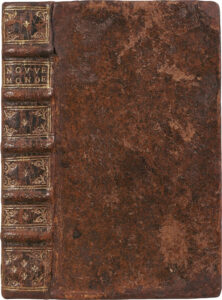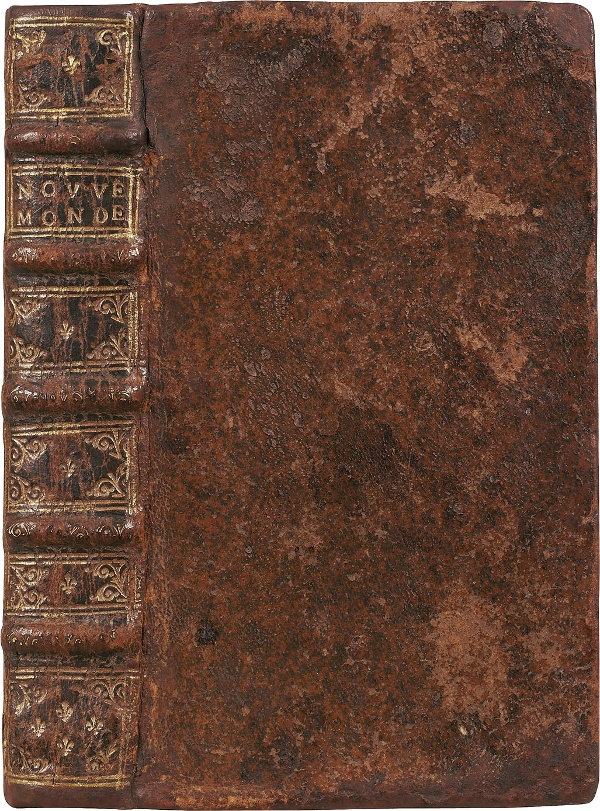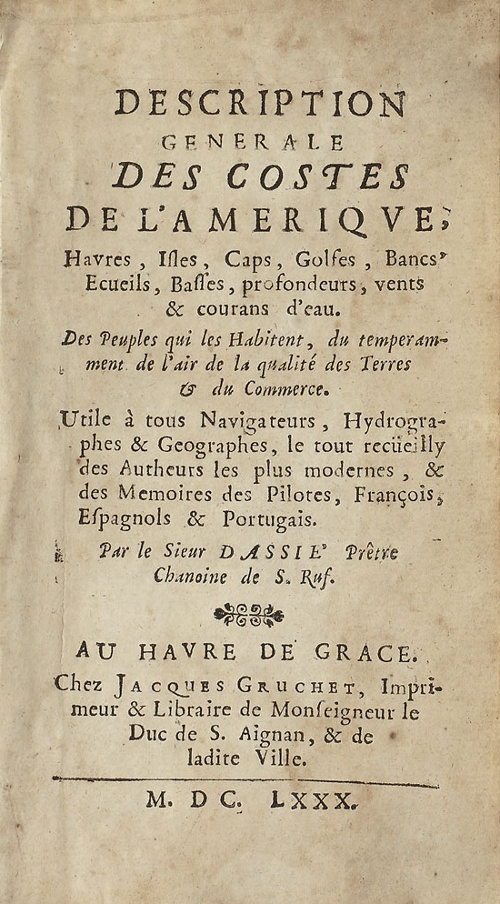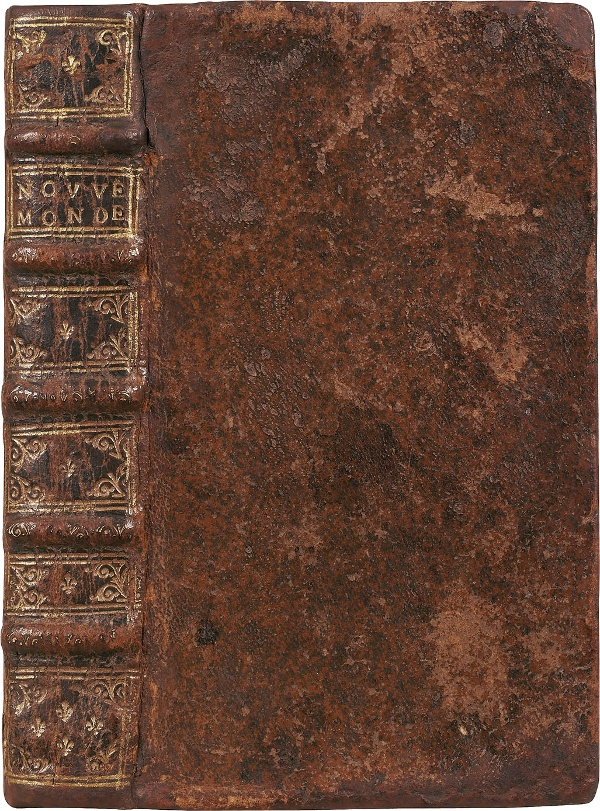Le Havre, Jacques Gruchet, 1680.
12mo [152 x 87 mm] of (8) ll., 421 pp., (1) bl.l. Contemporary full brown mottled calf, ribbed spine decorated with a fleur-de-lys in every compartment and of 4 fleurs-de-lys in the lower compartment, top and bottom of the spine restored. Contemporary binding.
First edition, a copy from the third issue with a new title-page dated 1680.
Leclerc, 1878, 163 ; Sabin, 18654 ; Cioranescu, II, 23473.
“Extremely rare” work according to several bibliographers, “very rare” according to Chadenat (I, 2598), composed by a navy captain who, thereafter, became designer and builder of boats for the King in Le Havre and then “Canon priest of Saint Ruf”.
After having sailed in the Atlantic, from Canada to Rio de La Plata, Dassié developed a passion for naval architecture. He made a table of tides, longitudes, latitudes and respective distances of the various ports in the world.
This work deals with territories in East Canada, United States, South America, the West Indies, etc. “that he seems to have a real knowledge of”. (Michaud)
The author precisely describes what he saw of America, analyses the cultivated products, fishing or the upcoming business with New France.
Navigation and geographic handbook (“California is a large land hardly anyone ever goes and out-of-the-way”), the work is enhanced with descriptions of the people that Dassié met (“Some adore Idols, others the Sun, others the devil”).
The “savages”’ portraits are unique: “In the most important nations of savages that live in New France, there are the Manathanes. It is a very cruel nation.”).
Dassié ends his description of goods with slaves: “slaves’ ordinary wages is bread. They get meat on Christmas day […] Slaves and domestics are the inhabitants’ biggest wealth.”
In the epistle he addresses to Humbert de Valernod, abbey and General Chief of the Canons Regular Order of Saint Ruf, Dassié alludes to the missions recently conducted by Catholics in America. “So many millions of infidels became children of the Church […] these savages who lived without laws and religion are very much satisfied with the sweet French domination”.
In the 17th century, Jesuits arrive in South America to evangelize Indians by conceiving their missions as a model of an ideal society.
Spanish and Portuguese kings, in the anti-clerical context of the Enlightenment, annoyed not to have their hands free on South America, finally expelled the Jesuits at the end of the 18th century.
Thomas Jefferson owned a copy of this work in his library.
Ambassador in France from 1785 to 1789, his action consists in developing trade relations between the two countries. He has been the catalyst for the interdiction of the slave trade in 1778.
Rare copy in a contemporary binding with its spine decorated with fleurs-de-lys.




